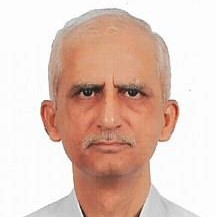The concepts of "perceived reality' and "inner reality' of an individual denoting the "self' and "inner self' have been dealt with in my earlier articles/blogs. The individual spends the day in the "perceived reality', which is practically speaking, the state of consciousness at the time of awakening from sleep. During the phase of deep sleep, the mind reaches the indefinable "inner reality' or "pure consciousness', which can be understood as the bliss of deep sleep. Upon waking up the individual enjoys the left over of this bliss, which is carried with the "consciousness' of the day and determines its quality.
Broadly speaking, the individual's consciousness is capable of three types of "knowing' or cognition or intelligence, namely, that perceived by the logical mind, that perceived by feeling and that perceived by the core of one's "being'. Popularly they have come to be known as IQ, EQ and SQ. General Intelligence or IQ was the first to be recognized, which could be evaluated through psychometric tests. Later Emotional Intelligence or EQ was found to be even more important for the individual's success in his daily life or profession. Spiritual Intelligence or SQ has recently been recognized as the most basic of all the three, which determines success in the individual's life as a whole.
Through Spiritual Intelligence (synonymous with "conscience at work'), all "knowing' by the individual is reconciled around the core of one's "self' (the "inner self' or simply "being'). When the reconciliation is complete, the mind easily reaches and enjoys the bliss of deep sleep. In the deep sleep state, there is only this bliss of "being' with the various intelligences remaining unmanifest. When the "being' becomes "becoming', the consciousness of the waking state carries with it this bliss. Thus "being' still lies within "becoming', when the intelligences are at work.
There is the "source' or "being' or the "inner self'. Spiritual Intelligence works closest to the "source' and requires deep inner awareness to be appreciated. Emotional Intelligence comes further downstream, requires lesser inner awareness and is more easily appreciated. General Intelligence comes last and is widely appreciated in daily life. When the individual or the "self' is blissful, the working of the intelligences is optimal and imperceptible. When the "self' is less than blissful, the first to be affected is Spiritual Intelligence; next comes Emotional Intelligence. General Intelligence is preserved unless the individual is severely disturbed.
When the individual is aware of only his General Intelligence, he would consider acquiring more knowledge in his area of work to be the key for success in life. If he becomes aware of his Emotional Intelligence, he would consider "feeling' to be more important than "thinking'. When the individual is aware of his Spiritual Intelligence there is realization that the quality of everything downstream depends on the bliss of "being'. He finds that by meditating on the bliss of "being' control is maintained on everything downstream, which in turn has a subtle effect on life as a whole. He enjoys blissfulness in his life and the various intelligences work to serve his purpose.
The above narrated process of enjoying blissfulness is compounded by three tendencies the individual has to reckon with. The "perceived reality' or "self' of the individual is determined by the interplay of these three tendencies, in-born within each individual in differing proportions and accounting for the diversity in the nature of individuals. Awareness of these tendencies is needed for the individual to proceed upstream and meditate on the "source' or bliss of "being' instead of being lost in the tantalizing external world. The three tendencies (or qualities) are the serene, the active and the passive.
Of these three, the serene tendency if dominant helps the individual to acquire closeness with the bliss of "being'. The active tendency leads the individual towards exploration and action entangling him with the phenomena of the objective world. The passive tendency if dominant leads the individual towards sensory pleasure and sloth. The serene tendency uniquely heals the disturbances arising out of the other two tendencies and if lacking leads to stress and its consequences. A healthy balance between these three tendencies helps the individual to lead a healthy and productive life.
The serene tendency is the foundation upon which the expansion of the active tendency and the enjoyment of the passive tendency rest. The cause of much of the ill-health found in individuals and society as a whole lies in loss of balance between these three tendencies. While the active and passive tendencies are glorified, the serene tendency is relegated to the realm of spirituality and not considered essential. Understanding the working of these three tendencies and giving due importance to the foundation or the serene tendency is essential for restoration of health.




